[Disclosure: Please assume all outbound links may in some cases provide site-sustaining revenue from ads or referrals (with never any extra costs to you). See footer for more details. Thank you]
Household Products: Wonders of Modern Science or Household Hazardous Waste?
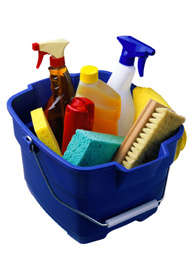
Just imagine the toxic soup of pesticides, petrochemicals, detergents, solvents, Lead, Mercury, Acetone, Formaldehyde, Benzene, Asbestos, Gasoline, Arsenic, and Ammonia (just to name a few) which was leached from the homes, businesses, factories, and refineries in New Orleans after Katrina turned the city into one big poisonous tea bag.
Those murcky putrid waters were iridescent for a reason. But where did all of that rainbow water go and will the longterm effects to humans and other animals be?
There's no doubt that one of the Hallmarks of the human species is how we have mastered the manipulation of our environments using synthetic chemicals. This is nowhere more obvious than in the typical home. But there is a cost to having all these household products in our homes!
It's a good bet that most homes have a wide selection of these potential sources of household hazardous waste. In addition to there ability to contribute to water pollution, many of their chemical ingredients are likely to contribute to poor indoor air quality due to off gasing of Volatile Organic Compounds (VOC) or Semi-Volatile Organic Compounds (SVOC). Some of these household products also contain dangerous ingredients which are flammable, corrosive, or can represent acute or chronic inhalation hazards for the user. You won't believe what's in some of these household products!
Some common household products include: paints, paint strippers, and other volatile solvents; wood preservatives; aerosol sprays; cleansers and disinfectants; moth repellents and air fresheners; stored fuels and automotive household products; hobby supplies; dry-cleaned clothing. If you are a homeowner, homemaker club or organization, daycare provider, housekeeping business person, family and consumer science educator, or a pesticide operator you need to know about identifying hazardous household cleaning products, the safe use of potentially hazardous household chemicals, volatile organic compounds (VOCs) or volatile solvents found in these household hazardous waste containing chemical products, and pesticides.
INDOOR AIR QUALITY
Indoor Air Quality can be impacted by some chemicals used for personal care and grooming, for hobbies, or to clean, protect, maintain, and decorate the home and its furnishings. Household products can release volatile compounds and hazardous chemicals into the air during use, as the household product dries or cures, or as the household product ages.
Examples of household products and household chemicals that could contain chemicals that may be absorbed, ingested, or inhaled include:
CONTROL INDOOR AIR QUALITY
Begin to control home Indoor Air Quality by the choice of household chemicals and household products used. Use the least amount of a household cleaner or other household product to get the job done. Read labels, follow safety precautions, and contact the manufacturer if you have questions. Other guidelines include:
- Do not use a potentially hazardous chemical unless absolutely necessary
- Use household chemicals and household products only for their intended purpose
- Always use household products according to manufacturer's directions
- Choose household product packaging that reduces the chance of spills and leaks, and is childproof if children live or visit in the home
- Keep household products in original containers so safety information and directions for use are with the household product
- Always use household products in well-ventilated areas
- Purchase only the best air purifier that has effective HEPA filtration and gas-phase filtration in order to reduce the smallest and most damaging of indoor air pollutants such as Volatile Organic Chemicals (VOCs).
REDUCE NEED FOR HOUSEHOLD CHEMICALS
Reduce the need for potentially hazardous household chemicals by practicing preventative maintenance:
- Clean spills and stains quickly
- Remove food wastes promptly
- Control excess moisture, for example:
- Prevent standing water, such as from air conditioner
drains or refrigerator drip pans
- Fix leaks, drips, and seepage problems
- Use exhaust fans during high moisture activities
Make your own safe products! Here's an extensive guide to making your own non-toxic Home-made Household Products!
LIMIT USE OF AEROSOLS
Limit the use of aerosol household products where possible. Aerosol household products tend
to release more chemicals into the air because they disperse the household product
into very tiny, airborne droplets. As an alternative, some household products are
available in a pump spray which makes it easier to direct the household product toward
its intended use, and therefore releases fewer chemicals into the air.
MIXING HOUSEHOLD PRODUCTS CAUTION
No matter what the household chemical, never mix household products or chemicals together, unless specifically instructed.
If household products are mixed, additional toxic chemicals may be released into
the air through chemical reaction. A common example is ammonia and chlorine
bleach, which are found in many household cleaners. When mixed, they react
to form a toxic gas.
VOLATILE ORGANIC COMPOUNDS (VOCS)
Some chemicals used in the home contain volatile organic compounds (VOCs) or semi-volatile organic compounds (SVOCs). VOCs are Organic Solvents that easily evaporate into the air. Volatile Organic Chemicals can be toxic and harmful to the environment. Many household products containing VOCs can be dangerous or flammable, especially if used improperly.
Water-based household products tend to be less hazardous to indoor air than household products
that are based on organic solvents.
VOC LABEL TERMS
Examples of household product label terms that identify a Volatile Organic Compound include:
- Chlorinated solvents
- Formaldehyde
- Methylene chloride
- Mineral spirits
- Petroleum distillates
- Toluene
- Trichloroethane
- Trichloroethylene
- Xylene
HOUSEHOLD PRODUCTS WITH VOCS
Examples of household products that usually contain VOCs include:
- Paint Strippers
- Wood cleaners and waxes
- Turpentine
- paints and paint thinners
- Wood finishes, such as varnish, shellac, stain, and oil
- Glues and adhesives
- Dry-cleaning fluid and spot removers
- Leather care household products
- Mothballs
- Deodorizers and air fresheners
HEALTH CONCERNS OF VOCS
VOCs may be toxic household products under certain conditions! Short-term exposure can cause:
- Itchy, burning, or teary eyes
- Skin irritation
- Nose, throat, or lung irritation
- Nausea or headache
- Dizziness or lightheadedness
- Allergic reaction
VOCS - REDUCING EXPOSURE
During household activities, reduce exposure to VOCs by:
- Choosing household products with reduced amounts of VOCs, such as water-based or latex paints
- Choosing low-VOC emitting household products, where available
- Following all safety precautions on the label for using VOC- or Solvent-based Household Products
VOCS - SAFETY PRECAUTIONS DURING USE
When possible, use VOC household products outdoors where compounds are more widely dispersed. Provide plenty of ventilation and fresh air if VOC household products must be used indoors. If indoor use of VOC household products is required, schedule activities for a time when the weather is mild so doors and windows can be opened for ventilation.
When using Volatile Organic Compound household products, take regular breaks for fresh air and be alert for possible reactions to the chemicals. Use protective gloves and glasses when using VOC household products. A respirator with an appropriate cartridge is recommended for prolonged use of Volatile Orgainc Compound household products, especially when working indoors. Keep VOC household product containers tightly closed to minimize evaporation.
Keep children and pets away from VOC household products. Also, pregnant women
and those who are chronically ill should avoid VOC products.
VOCS - HOUSEHOLD PRODUCT SAFETY
Treat VOC- or solvent-based household products with caution:
- Purchase only the needed amount of the household VOC product so there is none leftover to store (most containers are not completely vapor-proof)
- Carefully read labels of VOC household products and follow use and safety precautions (keep VOC household product in its original container so it is always properly labeled)
- Dispose of leftover or used VOC household products according to guidelines for potentially hazardous household waste -- call a community waste authority for assistance (treat empty VOC containers, applicators, and contaminated clothes in the same manner as the leftover household product)
MATERIAL SAFETY DATA SHEET (MSDS)
You can learn more information about a potentially hazardous household
product by requesting a copy of the Material Safety Data Sheet (MSDS).
The MSDS contains complete information about a household product, including all safety
precautions. Request the MSDS by calling the manufacturer. The household product
label usually has phone numbers, website address, or other contact information.
PESTICIDES ARE POISONS
Another type of household product, pesticides, are poison; they are used to kill or repel.
Examples of pesticides are:
- Disinfectants, such as to kill bacteria
- Fungicides, such as to kill mold
- Herbicides, such as weed killers
- Insecticides, such as to kill ants or cockroaches
- Rodenticides, such as to kill mice
PESTICIDES: GUIDELINES FOR SAFE USE
Pesticides can be especially dangerous household products and they require strict adherence to safety practices. Use pesticides only as directed by the household product manufacturer.
Many of the same guidelines we discussed earlier for the safe use of household chemicals, especially VOCs, also apply to pesticides. In addition, though, pesticides require other special precautions:
- Never use a pesticide in the house unless it is labeled as being safe for indoor use
- Give careful attention to the length of time you should be out of a room after using a pesticide
- Ventilate a space after pesticide use
- Avoid using pesticides in the yard or around the house on a windy day, as the pesticide may drift into the house
CARPET AS A CHEMICAL "SINK"
Carpets and other textiles in the home can act as a "sink" for airborne pollutants. Chemicals sprayed or evaporated can collect in carpet, upholstery, and other textiles. Clean and maintain the carpet regularly, especially if there are young children in the home.
Protect carpet and textile surfaces when household hazardous products
such as VOCs or pesticides are being used.
ARE "NATURAL" HOUSEHOLD PRODUCTS LESS POLLUTING?
Some products for household use are considered as alternatives to "harsh chemicals," and are labeled as "natural" or "environmentally safe." Some of these household products are considered generic, such as chlorine bleach, ammonia, and boric acid. Many of these alternative household products may seem safer; therefore, people sometimes ignore directions for safe usage.
Any household product that evaporates into the air has the potential to be an indoor air pollutant. The conditions for harm depend on:
- Quantity used, repetition of use
- Method of use
- Toxicity of household product
- Sensitivity of user
USING "ALTERNATIVE" HOUSEHOLD PRODUCTS
When selecting "natural" or "alternative" household products for the home, consider:
- Is the alternative household product as effective, easy to use, and convenient?
- Will the household product be safe to use for the intended purpose?
- Are there directions for use and safety information?
- Is the household product in safe packaging?
The unsafe use of many common
household products can cause many undesirable health effects. To protect
yourself and your family, read on.Q: What are some of the household products I should be aware
of?
A: Solvents, Paints, Paint Strippers,
wood preservatives, aerosol sprays, moth repellents, air fresheners, stored
fuels, automotive household products, hobby supplies, pesticides and some household cleaning products
and disinfectants.
Q: What are the particular ingredients in these household
products that I should be concerned about?
A: The household products to watch for are those
containing volatile organic compounds (VOCs), which are organic solvents
that easily evaporate into the air. Some may be flammable.
Following are some of the compounds listed on household product labels: petroleum distillates, mineral spirits, chlorinated solvents, carbon tetrachloride, methylene chloride, trichloroethane, toluene and formaldehyde. Other household product ingredients can also be a hazard if they are used improperly.
Q: What are some of the health effects?
A: Short-term effects include eye,
nose and throat irritation, and headaches. Long-term exposure can cause
loss of coordination; nausea; and damage to liver, kidneys and the central
nervous system. Some organics can cause cancer in animals and are suspected
of causing cancer in humans.
Q: What are some ways I can minimize potential
health problems?
A:
- First, read the labels of household products you are considering buying. Note the household product's ingredients and beware of any warnings of its use.
- Always use household products only for their intended purpose and according to the manufacturer's instructions.
- Use the household product in a well-ventilated area.
- Choose household products that are packaged to reduce the chance of spills, leaks and child tampering.
- Keep household products in their original containers so that safety information and directions for use are always with the household product.
A: Yes, by practicing preventative maintenance:
- Quickly attend to spills and stains.
- Remove food wastes promptly.
- Control excess moisture (such as standing water from air conditioner drains or refrigerator drip pans) and fix leaks, drips and seepage problems.
Q: Where can I get more information about safe
remodeling practices?
A: Contact your local Extension Office
or your state department of health. Take action now.
|
Hazardous Household
Products Should You Be
Concerned? Do you have these household products in your home?
Bleach, rat poison, mothballs, charcoal lighter fluid, oven cleaner, batteries,
mercury thermometers, gas, oil, wood polish, toilet and drain cleaners, shoe
polish, bug spray? Household products like these are
dangerous for your children! In 2000, nearly 20,000 children were
exposed to or poisoned by household chlorine bleach. Household products are called hazardous if they
can cause harm when not used the right way. Not every household product is a hazardous household product and
some are more dangerous than others. You can use most household products safely if you follow
the directions on the label. Doing things that are not on the label is risky
for your health and your family’s. People get in trouble by using too much
of a household product, or by mixing two household products together, for example. Children can be poisoned if household products are stored
or thrown away unsafely. Children’s bodies are small, so even a little bit
of some chemicals can cause big problems. Eating or drinking a hazardous household chemical product is
dangerous, of course. Also, just touching or breathing some household products— even
a very small amount of them— can be harmful. They can burn your skin or
eyes just by touching them. Some household hazardous products like many household cleaners can make you sick if they
get into your body through the skin or when you breathe in their dust or fumes.
Sometimes you know right away if you or your
child has come into contact with a household hazardous waste product. You may feel sick to your
stomach or dizzy. Your skin may itch or burn. Your eyes may water or hurt.
Other problems don’t show up until later,
like cancer or harm to your lungs. Also, being exposed to chemicals can affect
a child’s growing body. You can protect your children and yourself from
illness and injury. Use household hazardous products safely. Successful household hazardous waste management
involves storing a houshold cleaning product or other potential household hazardous substance carefully.
Dispose of them properly. The following will help you learn more!
In Case of
Emergency You can reach your local Poison
Control by calling (800) 222-1222 from anywhere in the country. Put this number
next to all of your telephones and where you store your hazardous household
products. Questions to ask?
Use
Safely Do you store hazardous household products
safely? Use
Less Can you cut down on the hazardous
household products in your house? Store
Safely Do you store hazardous household products such as a houshold cleaning product
safely? Safe
Disposal How do you get rid of leftover household
products? Action
steps Here are some ways to protect you
family's health! When in Doubt,
Check it Out Visit our extensive Household Chemical Encyclopedia which lists over 100 common household products, their toxic components, and how to safely use, dispose of, or replace them. Call your local Poison Control Center (800)
222-1222 Call your local Cooperative Extension office
Call your local or state health department
Call the Consumer Products Safety Commission:
(800) 638-2772 Contact Healthy Indoor Air for America’s
Homes: (406) 994-3451 The Home* A* Syst handbook gives more details
about this and other healthy home topics. (608) 262- 0024 EPA's Consumer Labeling Initiative |

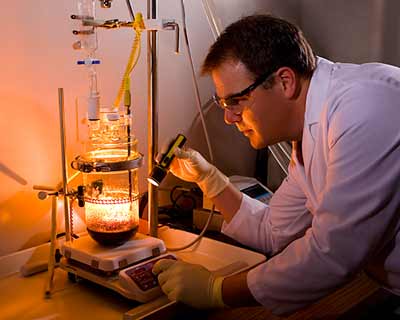

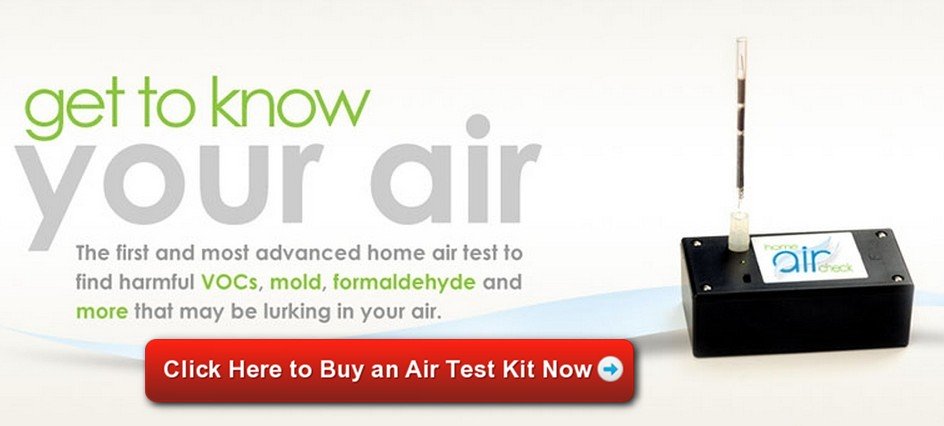
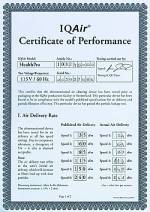
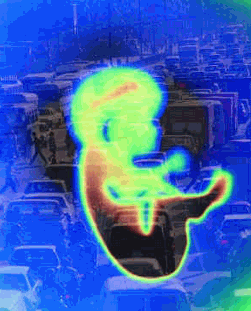
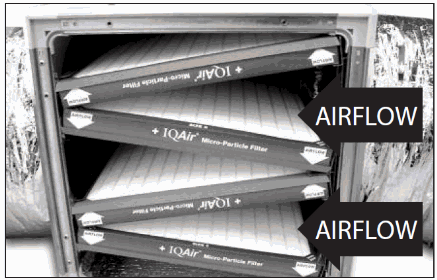
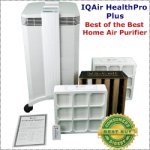
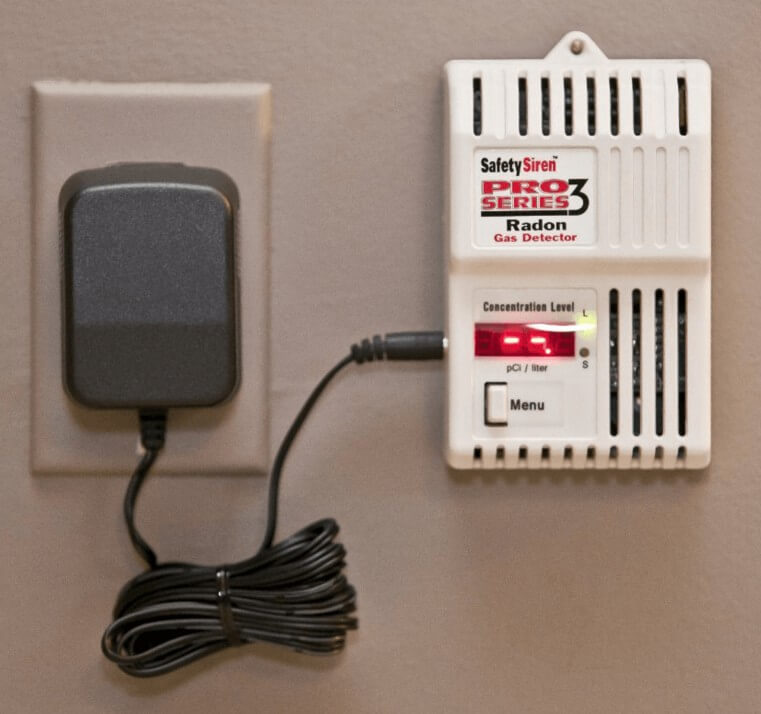




New! Comments
Have your say about what you just read! Leave me a comment in the box below.